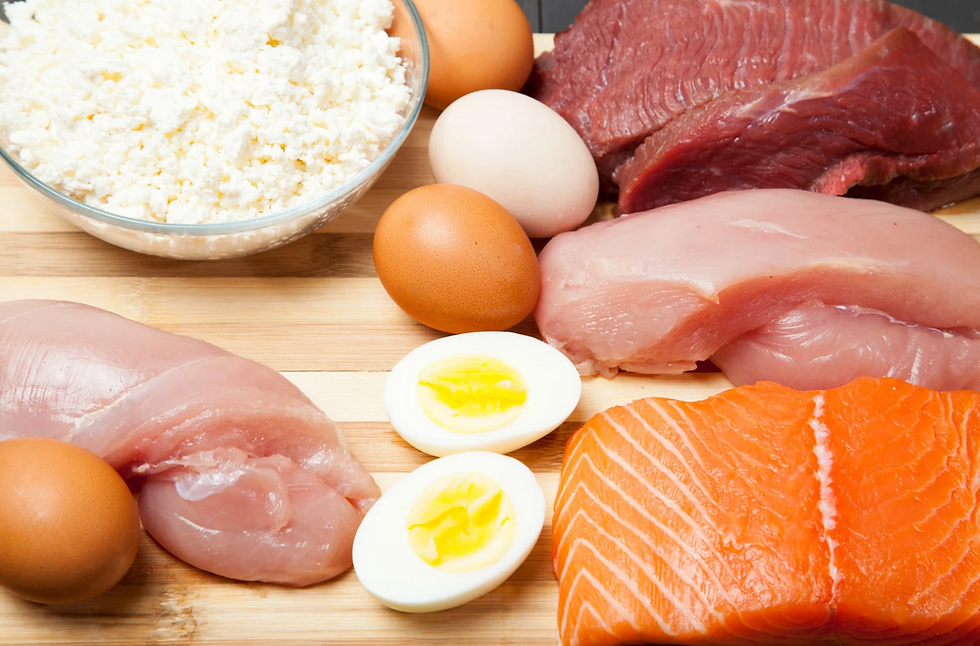Bread - The Good, The Bad, And The Ugly
- Orsolya Szathmari

- Jan 22, 2022
- 3 min read
Updated: Apr 17

Bread has been a very important part of the modern human diet. Grains have saved millions of lives from starvation, there is no doubt about that. But today the consumption of grains, cereals and any processed foods made with them are linked to metabolic problems and serious diseases.
So in what way is bread good and in what ways it is bad or ugly?
Bread is good, because everybody likes it and it is an easy and relatively cheap way to fill our stomach up. On the other hand, it is bad because it is addictive and its consumption can lead to weight gain. But bread (or more precisely wheat and other grains) is mostly ugly because it can cause serious diseases and/or inhibit recovery. For example celiac disease, non-celiac gluten sensitivity, many autoimmune diseases, chronic constipation, bloating, skin problems might all be related to grain consumption.
When it comes to the transition to a low-carb, ketogenic, carnivore diets, the far biggest challenge for many people is to giving up bread. Many think first that it is just not possible to live without it. Having breakfast or dinner without the good old bread? No way!
Even if I am not a big fan of any keto-style breads, I think that in the transition period and on special occasions it can be useful to substitute traditional bread with a grain-, nut- and dairy-free alternative. In my view the main problem is that EVERY bread is a processed food. It always contains a concentrated form of one or several ingredients and this can cause problems. Bread is not a whole food.
The most popular keto breads are made with almond or other nut flours. Nuts and seeds have numerous different anti-nutrients and when used in breads or cakes in a concentrated form, they can lead to health issues on the long run. Other keto breads contain the high-fiber psyllium or a big amount of cheese. Both can be problematic for many people.
I haven’t eaten bread for years and honestly, I don’t miss it at all. But I am experimenting with different recipes because I see how important it is for some of my new clients. I think that eating these bread alternatives when starting a new diet or later on certain occasions can be useful if it improves diet adherence.
For me the best option is this bread. It contains only meat, eggs, pork cracklings, salt, baking soda and a bit of honey.
I had to experiment further because my 12 year-old niece - who would benefit enormously of the ketogenic diet - didn’t like it. Too bad! So I tried the egg white bread that has been circulating on the internet, but I found it extremely dry and difficult to swallow. So I modified it by adding egg yolks and some cracklings to it. I have to say that it turned out pretty well, but it’s still a bit dry. One needs to eat it with a good amount of fat.
The recipe is not complicated, but you need to follow the instructions carefully. If the egg whites are not whipped properly, the bread will not rise. The crackling-egg yolk mixture needs to be folded in extremely carefully, without breaking the structure of the whipped whites.
Keto-Carnivore Bread

Ingredients
6 egg whites
4 egg yolks
1 whole egg
1 tsp honey
1/2 tsp salt
1 tsp baking soda
2 tbsp pure top quality collagen powder
6 tbsp organic egg white powder
5 tbsp pork cracklings (greaves)
Method
Make sure you are using a clean and dry bowl. Never use a plastic bowl for this purpose.
Separate the egg whites from the yolks, making sure that no yolk gets in the whites.
With a food processor whip the egg whites and the salt on high speed to stiff peaks, for about 6-8 minutes.
Add the collagen and the egg white powder and whisk for about a minute more on medium speed.
Blend the egg yolks and the whole eggs with the cracklings. Mix in the baking soda and the honey.
Fold the yolk mixture in the egg whites very carefully, without breaking the texture of the whipped whites.
Line a baking form with parchment paper.
Pour the batter in the form.
Bake at 180 °C for 10 minutes and reduce the heat to 160 °C and bake for about another 25-30 minutes.
Take the bread from the form and let it cool completely before slicing.
You can keep it for a couple of days at room temperature. Slice and freeze the rest for later.
Eat it fresh or toasted with lard, sausage, salami or smoked slab.
Bon appétit!






Comments